
Identification Guide to Boxwood and its Lookalikes
DOWNLOADMay 12, 2022 - Isabel Branstrom, Rebecca Krans, David Lowenstein and Nathaniel Walton, Michigan State University Extension
In 2021, box tree moth was spotted for the first time in Michigan. This invasive insect poses a major risk to the health of boxwoods (Photo 1). It is critical to prevent it from becoming established. Left unmanaged, the box tree moth feeds extensively on boxwoods – not on other plants. This guide will help you identify boxwoods as well as similar-looking plants so that you can tell the difference between them.

What is a boxwood?
Boxwoods (Buxus spp.) are a popular shrub due to their low maintenance requirements and ability to prune to shape. This small to medium-sized shrub stays green year-round and typically reaches 3 to 4 feet high and wide. If left unpruned or as an informal hedge, shrubs can reach over 5 feet (Photo 2). The foliage tends to be dense. Buds that break dormancy after pruning generate new growth. This allows boxwoods to take well to regular maintenance and keep a dense shape.
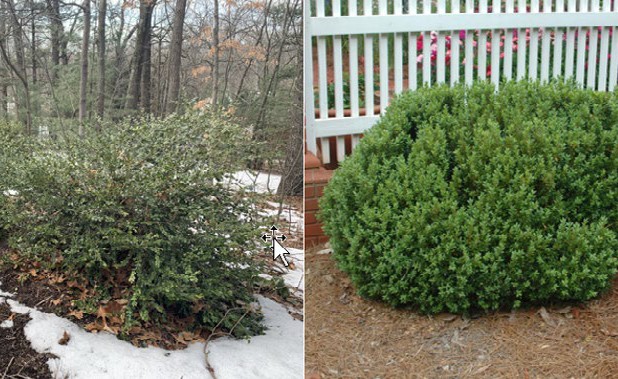
Look closer at the shrub’s leaf features for helpful clues to its identity. Boxwood leaves are evergreen and remain on the plant through the winter. They range from 0.5 to 1 inch long and are a dark, glossy green on top. The back of the leaf is usually a lighter green with a distinct white midvein (Photo 3). Small, dense, white hairs make up this distinct midvein. Sometimes winter conditions can cause leaves to bronze, but they tend to regain their green color in spring.

Holly (Ilex spp.)
Holly plants include several species with broad and spiky leaves 2 to 4 inches in length that alternate on sides of the margin. They produce inconspicuous white flowers in spring and develop red berries in later summer when male and female plants are present (Photo 4).
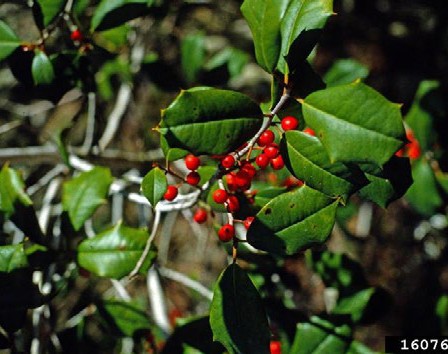
Inkberry (Ilex glabra)
This shrub in the holly family includes dwarf cultivars such as ‘Shamrock,’ ‘Compacta’ or ‘Chamzin’ with leaves an inch longer than boxwood (Photo 5). Leaves are alternate and sometimes fall off in winter. When male and female plants are present, inkberry produces showy black berries.
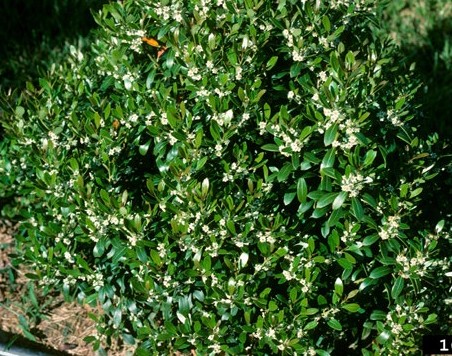
Yew (Taxus spp.)
Yews are a narrow leaf evergreen shrub. While they stay green year-round, their leaves do not resemble the oval-shaped leaves of boxwoods as they are needlelike. Leaves are on opposite sides of the stem like boxwood (Photo 6).
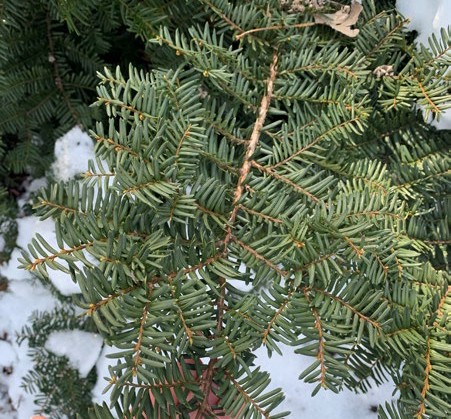
Japanese barberry (Berberis thunbergii)
This ornamental plant has invasive traits and can form thickets. Michigan State University Extension does not recommend it as an alternative to boxwood. Leaves are an inch long and spoon shaped – wider at the tip and tapering toward the base (Photo 7). There are often small spines along the stem, near the leaf bases. Purple leaf cultivars also exist along with the green- leaf types.
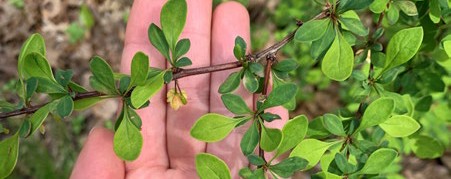



 Print
Print Email
Email







